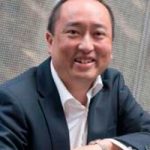A sector specialist has recommended SMSF trustees looking to lower their total super balance for Division 296 tax purposes to make the withdrawals from their accumulation account and not from a pension interest.
Colonial First State head of technical services Craig Day made the suggestion based on the operation of the formula used to calculate exempt current pension income (ECPI).
“For a self-managed super fund [your] clients are highly likely to have to use the unsegregated method [when calculating ECPI] because they’ve got disregarded small fund assets [due to the fact] they’ve got [total super] balances over $1.6 million,” Day noted.
“In that situation I actually want to pull money out of the accumulation phase. Why is that? Well in that situation we’re applying a [particular ECPI] formula.”
Specifically, the ECPI calculation method to which he referred divides the average value of a person’s current pension liabilities by the average value of an individual’s superannuation liabilities.
“So obviously in that situation if I pull [money] out of the accumulation phase, [I will make] the denominator [of that equation] smaller, [but] the numerator stays the same and I get a large ECPI percentage,” he explained to attendees of an SMSF Association member’s webinar held last week.
According to Day, trustees also have to consider when to make the withdrawal allowing them to escape the Division 296 tax threshold trigger, again due to the application of the aforementioned ECPI calculation formula.
“In a self-managed super I might want to think about doing it at the beginning of the year. Why? Because that has the benefit of maximising the average value of my superannuation liabilities and minimising the average value of my accumulation liabilities so therefore that denominator is smaller compared to my numerator and I get a larger ECPI percentage,” he said.
“[However], you don’t have to do anything until 30 June next year, but [some clients] might want to think about doing something earlier than that to give them a better tax result because they’re going to have to sell assets to pay out benefits and that’s going to trigger CGT (capital gains tax), and therefore if [the client does] that earlier in the year, [they] might get a larger tax-free proportion because of that and [in turn] lower tax on those capital gains.”




